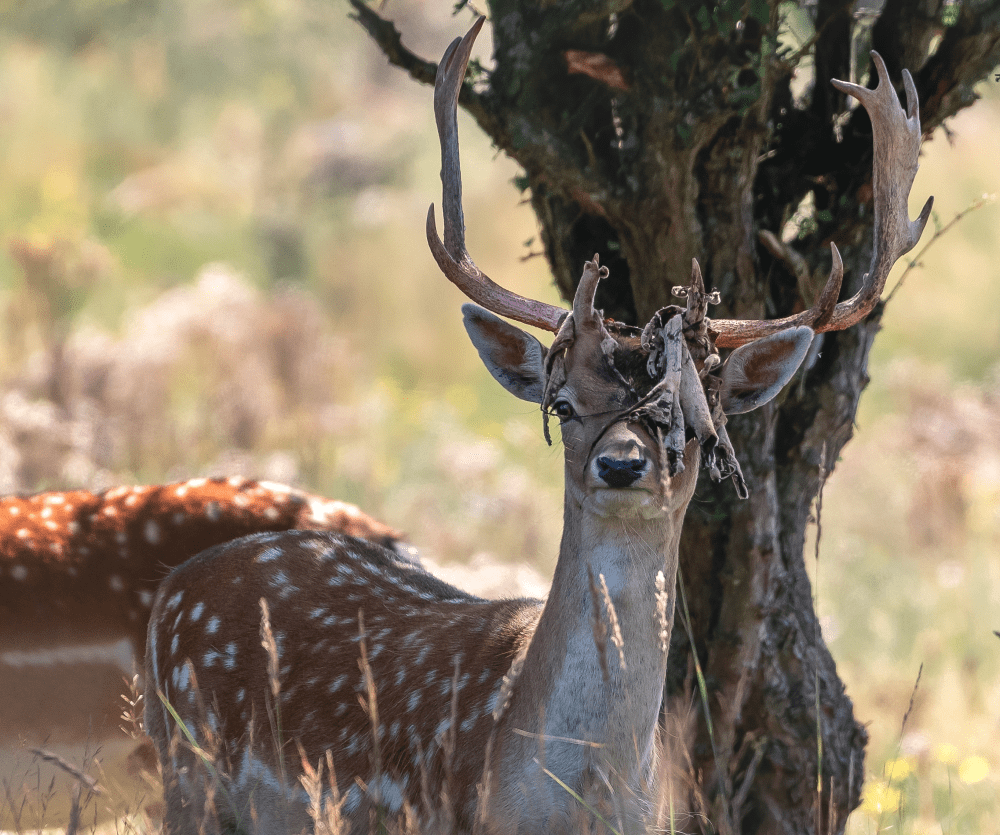A bloody scene awaits anyone unlucky enough to come across a deer shedding velvet. The scarlet strips of fuzzy flesh that hang from their antlers look like something out of a horror film, but in reality it’s a perfectly healthy part of deer life and helps them get ready for mating season.
Shedding velvet, as the annual antler scrape is known, turns a male deer’s most prominent features from fuzzy protrusions into the shiny, wood-like antlers most people are more familiar with. Growing antlers means getting a good blood supply; but once they’re done that supply dies back, and as the skin sloughs off the aesthetic takes a turn, even if just for a day.
Why does shedding velvet happen?
What separates antlers from horns is that they’re not permanent structures, and are actually lost and grown every year. Some deer species will start growing the next set almost as soon as the previous ones have popped off, but the gap between sets can vary.
When it’s time to grow new antlers, the deer need a good blood supply to keep the tissue cooking and growing until it’s suitably impressive. To do this, the antlers develop with a thin layer of fuzzy tissue that’s referred to as “velvet”. It contains a rich tapestry of blood vessels to feed the necessary development, but once the growing is done it has to go.
You got a little dead skin on your face. Image credit: Jolanda Aalbers / Shutterstock.com
Deer shedding velvet
When a deer is ready to lose its antler fuzz, the window of velvet shedding is usually quite short, at around 24 hours. During this time, quite the scene unravels, as the animals will scrape their antlers on trees until strips of bloody flesh are hanging from their heads. They’ll even eat the strands of sloughed off velvet to speed up the process. Have we ruined Bambi for you yet?
Is shedding velvet painful for deer?
While the bloody sight of deer shedding velvet is quite shocking, it’s not thought that the process is actually painful for these animals. Shedding velvet begins because the deer’s blood supply has dropped off to this part of the body, so the tissues are naturally disintegrating. It may be a little itchy, which would explain all the bloody trees left in the wake of deer shedding velvet, but it’s effectively just a way of shifting dying skin.
Once the velvet is gone, the antlers will harden and darken into their final form which they need if they’re going to impress a mate and have a chance to procreate. Fortunately, all the blood and stringy velvet is long gone before mating begins.
A bloodied tree that’s been used as a velvet shedding post. Image credit: Lynn A / Shutterstock.com
Once the antlers have served their purpose, they will eventually fall off so that the cycle can begin again. While it can be tempting to scoop fallen antlers up as an ornament, there’s actually a few reasons why you shouldn’t do this. You can read about them here.
Source Link: Deer Shedding Velvet Looks Painful But It's All Part Of Antler Life
